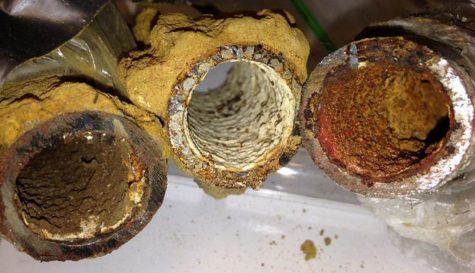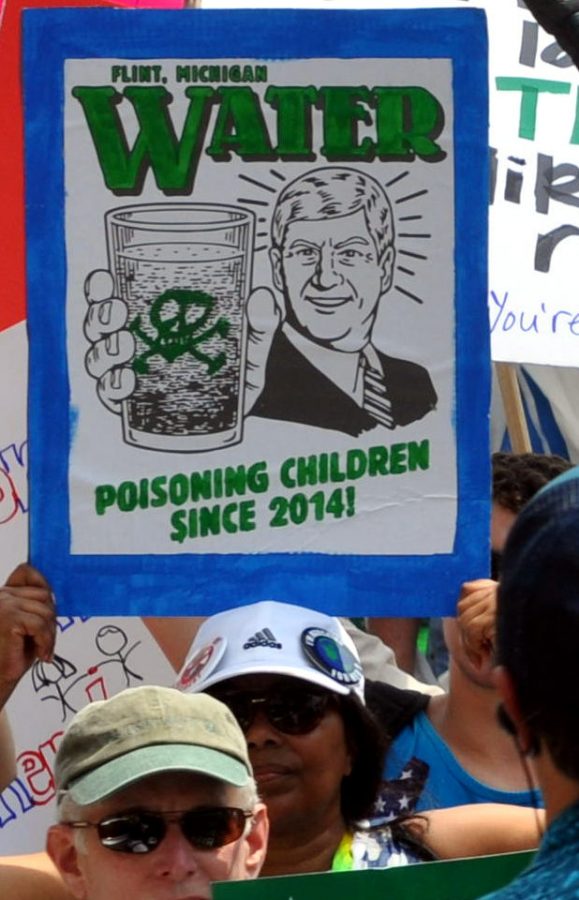Flint, MI: The Disaster the World Forgot
Photo labeled for non-commercial reuse via https://upload.wikimedia.org/wikipedia/commons/2/2a/Climate_March_1085_%2834368550705%29.jpg Under the Creative Commons Licence A banner held up at a peaceful protest about the current water situation in Flint, Michigan.
Apr 12, 2019
Imagine jumping into your shower after a long and difficult day, just to be sprayed by mass amounts of deep, orange-colored muck. This is how life could have been if you were unfortunate enough to reside in the city of Flint, Michigan. Just under 100,000 people live in Flint, nearing the amount of people who live in Woodbridge Township. The only way people get drinkable water is from bottles, and the crime rate is one of the highest in the United States. Would you want to keep on living there?
According to history.com, the water dilemma in Flint, Michigan, started from a mishap while trying to conserve money. On April 25th, 2014, higher-ups at Flint swapped the water source from Lake Huron and the Detroit River to the Flint River. The acidic, non-regulated water of the Flint River in addition to the corrosive pipes made the water extremely unhealthy to consume, as shown by the graph on the right. The water in Flint has 13,000 parts per billion, which is a bit over double what the EPA considers as “toxic waste”.
After months of avoiding the subject, Karen Weaver, the mayor of Flint, Rick Snyder, the former governor of Michigan, and Barack Obama, the president of the United States at the time, classified Flint as being in a State of Emergency back in 2015, and gave out items such as free bottles of waters and filters to the residents.
Now that you know more information about the crisis, let’s learn what other people think about the circumstances at Woodbridge Middle. Seventh grader, Tyler Weber, said he believes that crime is so common that it will only “bring the city down” on top of the already disastrous water situation. Eighth grader Brendan Gill inferred that not many have left Flint because of the elevated poverty rate in the city, saying people “can’t afford to leave”.
As stated by one of WMS’s science teachers, Mr. Blackmore, lead affects “some of the major organs in your body.” Some of these organs are the brain, heart, and intestines. PBS

Frontline pointed out that the Legionnaires’ Disease is the main cause of death from ingestion of Flint’s water. They describe Legionnaires’ as a “severe form of pneumonia caused by the legionella bacteria.”
Many people believed that this affected schools negatively. “Water fountains couldn’t be used, and it could affect children’s learning abilities if they were dehydrated.” Luke Vazquez, a seventh grader, commented. When students learned about how a similar situation to Flint was happening nearby Woodbridge, to schools in Newark, New Jersey, and New York City, they had little words to comment once the idea of mayhem like this made its way to WMS.
“I would move,” was simply said by a sixth grader from Mrs. Duffy’s classroom. Stephanie, another sixth grader from Mrs. Duffy’s class, stated that she would make a fundraiser of some sorts to raise money for the situation.
It’s been 1,813 days and counting since Flint, Michigan has had clean water. The five year anniversary is coming of the event is approaching, and it’s starting to seem like the disaster the world forgot.





